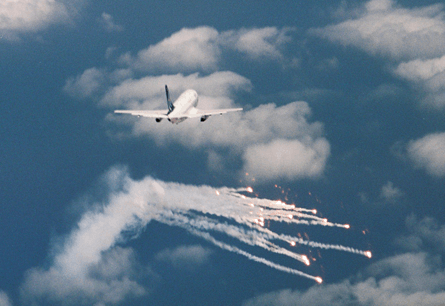Israel's security apparatus for protecting its civil aviation on the ground and in the air is probably the world's biggest, relative to country size. This is a result of attempts to hijack and blow up airliners bound for the country.
Ground security operations span those at Tel Aviv's Ben Gurion international airport and those pertaining to Israeli airlines' aircraft at foreign airports. At Ben Gurion, only some security measures are visible. What is obvious is the profiling system each passenger goes through before boarding a flight. The system is based on a set of "characteristics" that determine the level of risk posed by each passenger. Even with all the new technology throughout the airport, profiling is still the most trusted way to catch the bad guys.
Before it is installed, new security technology must be approved by a special laboratory in Israel's general security service, and most of it is operated behind the scenes.
The next step in a multi-year plan to improve the airport's security process and passenger flow will be the installation of a special screening system for hold baggage.
 |
|---|
 |
© Israel Aerospace IndustriesIAI's Flight Guard flare-based system was modelled on one used by the Israeli air force |
Armed and unarmed security personnel patrol the terminals and sensitive areas, backed by closed-circuit TV cameras linked to the airport's main security command post.
Israel's airport authority has been evaluating the use of unmanned vehicles to patrol the perimeter. A candidate is the Guardium, made by G-Nius, a joint venture between Israel Aerospace Industries (IAI) and Elbit Systems.
Since the attempt to shoot down an Israeli passenger airliner in Kenya in 2002, there has been a gradual move to equip Israeli passenger aircraft with terrorism countermeasures. An early decision was to use IAI's Flight Guard flare-based system. But this has not been installed because other nations' airports have refused to allow aircraft carrying flares to land on their runways.
The permanent solution adopted is the commercial multi-spectral infrared countermeasures (C-MUSIC) system developed by Elop, the electro-optics division of Elbit Systems. Israel's civil aviation authority is in the process of certifying the system.
Adi Dar, Elop's general manager, says certification will cover use of C-MUSIC on Boeing 737, 747 and 777 aircraft and the Airbus A320. The system transmit a laser beam that causes missiles to veer off course.
Israeli security experts have also been focusing on cargo as an acute threat. Last year, the general security service identified potential threats posed by courier packages flown by dedicated or passenger airlines. Measures were taken but are classified.
Some major US airports are checking passengers bags with the I-Screen system developed by Israeli company SpaceLogic. I-Screen deploys date-fusion software.
After 9/11, the Israeli authorities decided to step up "control verification" of aircraft bound for Tel Aviv. The highly classified Code Positive system was developed by Elbit Systems for Israeli air traffic controllers to use in verifying that incoming aircraft are not hostile.
The plan was to give smart cards to all pilots who fly to Israel regularly. A special control centre was set up to process data from the cards and clear each aircraft. US Airways, Delta, Continental, Air Canada and Ethiopian agreed to take part in a trial of the system.
But opposition was led by the European Commission, IATA and the International Federation of Airline Pilots' Associations, which claimed that the system might create discriminatory disadvantages and impediments to the development of air services to Israel, without providing a satisfactory increase in security.
Israel's ministry of transport has elected to stop using the system. Other measures have reached implementation. On every flight of an Israeli airline flight, there are armed security officers in the cabin. And any aircraft delivered to an Israeli airline is fitted with "special security features" before entering service.
Source: Flight International
















